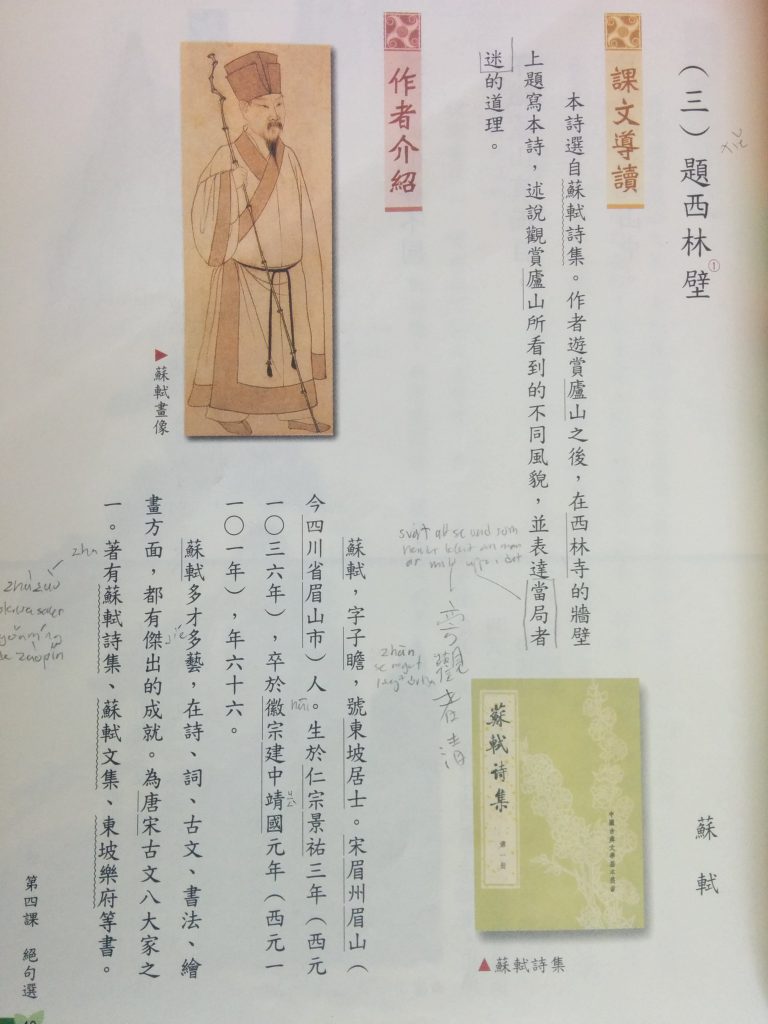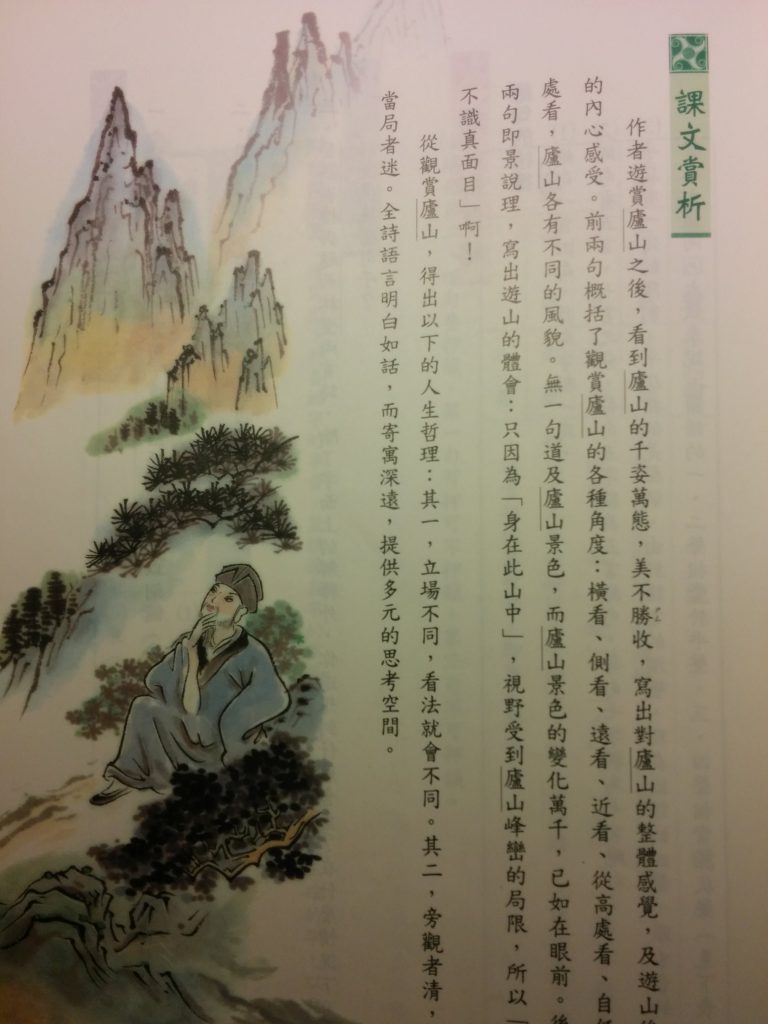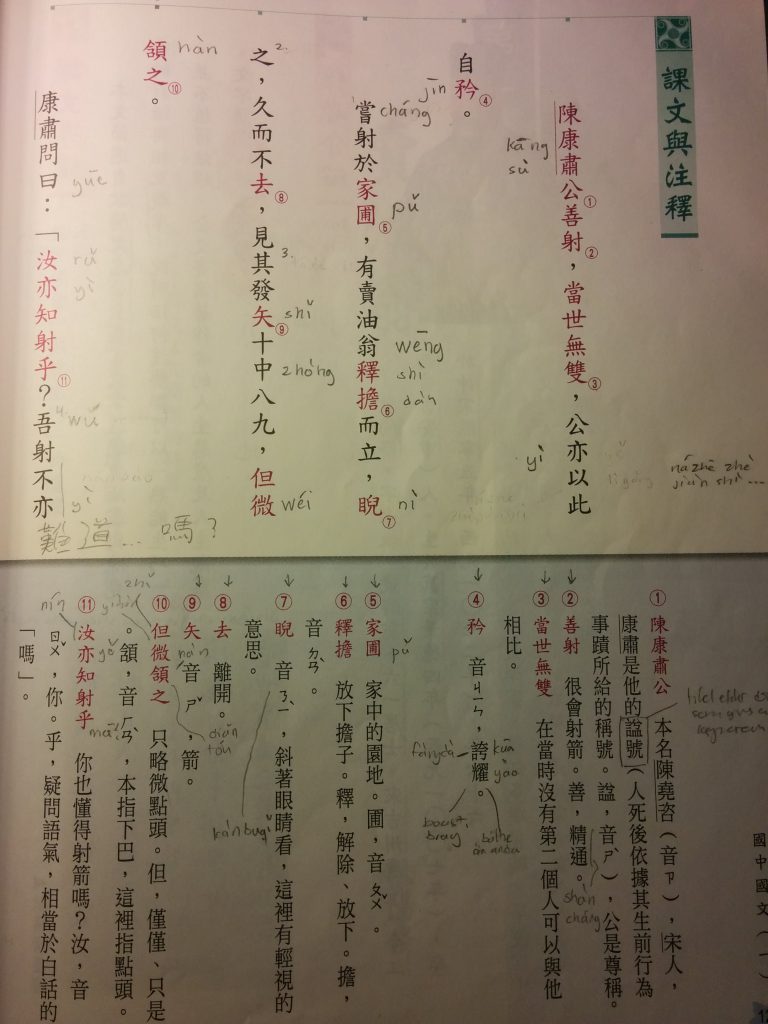 Textbooks are great for learning languages, including Chinese, but it’s important to diversify your reading. If you only read your textbook, you’re not doing it the right way. This becomes more true the more advanced your level gets, when diversity in reading material becomes a goal in itself. If you want recommendations for reading material, check:
Textbooks are great for learning languages, including Chinese, but it’s important to diversify your reading. If you only read your textbook, you’re not doing it the right way. This becomes more true the more advanced your level gets, when diversity in reading material becomes a goal in itself. If you want recommendations for reading material, check:
The 10 best free Chinese reading resources for beginner, intermediate and advanced learners
One way of diversifying your reading that I’m particularly fond of is to use Chinese textbooks written for native speakers. While being quite difficult, they are useful because they provide a unique combination of language and culture that is hard to find elsewhere.
Tune in to the Hacking Chinese Podcast to listen to the related episode:
Available on Apple Podcasts, Google Podcast, Overcast, Spotify and many other platforms!
To make sure everybody’s on the same page, I’m talking about what’s called 语文 (yǔwén) on the mainland and 國文 (guówén) in Taiwan. This would be akin to studying English for Americans or Swedish in Sweden. The textbook authors assume that you already speak the language; they want to teach you more about written language, literature, advanced vocabulary and so on.
If this is what you want to learn, 语文/國文 textbooks are great!
The benefits of using 语文/國文 textbooks to learn Chinese as a second language learner
I have already hinted at some of the benefits above, but let’s take a more detailed look:
- Written Chinese with some help and exercises – These books are meant to help students improve their Chinese, so they will introduce new language, discuss how it’s used and even give you exercises to work with. Since the target group already speaks Mandarin fluently, the focus is on written, formal language.
- Learning about culture and literature – By reading the texts in 语文/國文 textbooks, you will learn what native speakers learn, which hopefully will make it easier to understand them and their culture. Which authors are important? Which stories? You will also get introductions to both the authors and their work, helping you put them in context.
- A glimpse of what it’s like for them – I find it very interesting to see what and how native speakers learn to read and write Chinese. This includes everything, from the actual texts and language content to the way the books are structured and the underlying pedagogy. It’s also interesting to see how ideology and politics influence the content.
- Baby steps to classical Chinese – Depending on the level of the book and when and where it was published, 语文/國文 textbooks usually include fragments of classical Chinese: short poems, excerpts from the Analects and so on. These typically have some scaffolding in modern Chinese, because Classical Chinese is hard for Chinese children too. This scaffolding makes it easier for us foreigners too,but if you want to dive into Classical Chinese properly, you’re better off with textbooks and courses written for non-natives speakers.
- They are cheap – If you live in an area where there textbooks are used, you can get hold of as much reading material as you want at a very low cost. Compared to textbooks for adult foreigners, these books are very cheap, partly because they are part of compulsory curricula in school and partly because textbooks in English target an audience with considerably more purchasing power. As a comparison, Integrated Chinese, volume 1, costs almost $60 on Amazon, but the most recent edition of the book I show pictures from in this article only cost $7.
- A lesson in humility – Unless you have studied Chinese for a long time already, picking up a 语文/國文 textbook meant for 12-year-olds is going to be a lesson in humility. I did so after having studied full-time for about two year, at which point I felt that my reading was pretty good, but I found it too hard. I still worked through the entire book because it was part of our curriculum, but it was clearly so much above my level that this was not ideal. I have included a few pages from the book I used here if you’re curious (from Taiwan, hence the traditional characters and vertical script):
Many of the above advantages actually apply to other textbooks for native speakers as well, including in mathematics, history, science and so on, which I have written more about here:
A few caveats, or why 语文/國文 textbooks might not be so good for foreign students
While it should be obvious that I think 语文/國文 textbooks are great for learning, there are two major disadvantages with using them:
- They are too difficult – I mentioned this above, but it’s worth repeating here because these textbooks are great examples of something in Chinese that is harder to learn than it seems. 语文/國文 textbooks are really hard compared to the final book in any textbook series for foreigners I’ve seen. We’re talking way beyond HSK 6 here, even if you go for junior high school. Your only way of adjusting difficulty is to choose books for younger kids, but these also tend to be less interesting. You can of course also skip particularly difficult parts (usually anything related to Classical Chinese).
- They are not always helpful – I said above that using 语文/國文 textbooks is good because they offer some scaffolding in the form of footnotes, introductions and so on, but it’s worth keeping in mind that these are meant for young native speakers. This means that they aren’t always helpful for foreign adults. You can of course compensate for that by using your own dictionary or having a tutor guide you through the text, but it’s still a disadvantage.
Which books to use and where to get them
I haven’t used enough books to recommend one series over another. On the mainland, there are standardised books, but they differ between provinces. In Taiwan, there are a few book series in common use. I would suggest you get the most popular series where you live.
The easiest way to do this is to go to any major book shop and ask for it. Buying online or from abroad is a lot harder and it’s probably easier to ask someone locally to buy them for you and mail them.
A better alternative is to find digital copies, which isn’t very hard. For example, check the article I linked to above: 866 digital textbooks for expanding your Chinese.
Conclusion
I’ve learnt a lot from studying 语文/國文 textbooks and think they are in many ways superior to advanced textbooks for foreigners. They are also much easier to get in large quantities and a lot cheaper. If you’ve finished your textbook series and want to try something authentic, why not check out what the kids are studying?

Tips and tricks for how to learn Chinese directly in your inbox
I've been learning and teaching Chinese for more than a decade. My goal is to help you find a way of learning that works for you. Sign up to my newsletter for a 7-day crash course in how to learn, as well as weekly ideas for how to improve your learning!


4 comments
I’ve read the 小学语言课本 level 3 and 4 and I only can totally agree with you. On one hand you can learn a lot about Chinese culture and the way of Chinese thinking, which helps me to understand Chinese people much better. On the other hand, there are so many Chinese characters which an adult foreign Chinese learner will probably never use in his daily life. Still, I would recommend it to anyone who is seriously interested into learning Chinese.
By the way, I miss the challenge of July. Have you stopped the challenge?
I’ve just paused the challenges over the summer. We’re working on a new version of the site and I thought that taking a break and launching the new version after the summer would be the best way to do it. Regarding textbooks, I think what you say about non-everyday characters is partly (or even mostly) what makes these books difficult for second language learners, especially those who haven’t really mastered the everyday characters yet.
Dear Olle, I wondered if you could tell me the exact name of the book pictured in the article ? I’m interested in adding it to my collection.
Best regards
It’s just called 國文一! It’s published by 南一書局, which is how you can find it considering that textbooks published for schools usually have such generic names. I purchased this in 2009, though, so while the publisher is still around and publishes 國文 textbooks, I’m not sure how much they’ve changed since then!